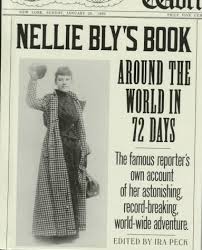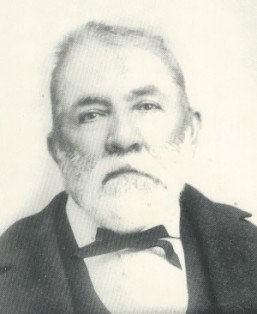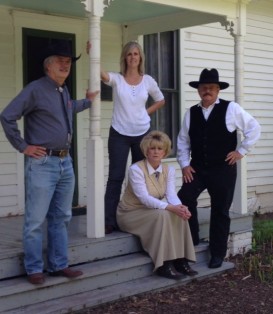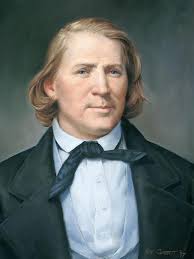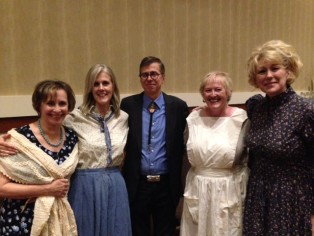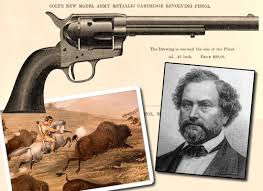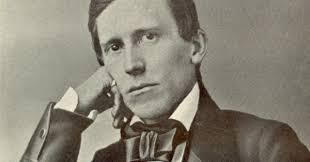Don’t wait! Enter now! It’s a double giveaway. Enter now to win two books! Tales Behind the Tombstones: The Deaths and Burials of the Old West’s Most Nefarious Outlaws, Notorious Women, and Celebrated Lawmen and the new book More Tales Behind the Tombstones: More Deaths and Burials of the Old West’s Most Nefarious Outlaws, Notorious Women, and Celebrated Lawmen.
On a summer day in the early 1880s an article called “What Girls Are Good For” appeared in the Pittsburg Dispatch. It took a firm stand against the new fad of hiring women to work in offices and shops. “A respectable woman,” the article noted with authority, “remained at home until she married.” If a husband eluded her, she had two choices left. She might go into teaching or into nursing, provided money for her training could be wangled from a reluctant father. Otherwise, she stayed under his roof or that of a relative and for the remainder of her life accepted the status of house worker or child’s nurse, without pay.
The article expressed the customary male sentiments of the day, more emphatically than usual because the editors were stirred up over the inroads being made by suffragettes. Radical females like Susan B. Anthony, openly militant in regard to votes for females, and Elizabeth Cady Stanton, champion of women’s rights, went striding up and down the country with a following of “bloomer girls.” Nobody knew better than the Dispatch’s managing editor, George A. Madden, that since the Civil War the manpower shortage had increasingly drawn women into mills and factories, but he felt a barricade must be erected against such an alarming trend. Women in politics were unthinkable, as obviously out of place there as they would be in such a masculine stronghold as his own, a newspaper office.
The article received the expected male commendation from Mr. Madden’s business associates. He was happily married and his wife, busy with children, made no comment. Other matters had taken its place in his active editorial mind when a few days later his memory was refreshed. Going through the morning mail, he read a letter and winced. Then he read it again, and a third time, even though it bore no signature, and for a reason. It was a reply to the “What Girls Are Good For” story, and it sizzled. It was a rebuke to the newspaper’s old fashioned attitude, a declaration of independence for women, a war cry to them to take their proper place in a man’s world to lead interesting, useful, and profitable lives.
The anonymous communication was well written, blazing with conviction. But there was more than that to challenge Mr. Madden’s interest. It made sense.
The busy editor finally tossed it into the pile, finished the remainder of the mail, and went back to reading the tissue-paper slips bearing the telegraphic news. But when he had them impaled neatly on the nearby spindle, he took up the letter again. It intrigued him. He studied the handwriting. It appeared feminine, as feminine as the attitude it expressed. But surely no woman could write so logically and so eloquently.
He could not publish the thing, even with a signature. It was against his principles, against popular opinion. But he did want to know who had sent it. An idea came to him. He would advertise in the columns of the Dispatch for the writer’s name and address, and, if he obtained them, he might assign a story to be written on the other side of the question. The author would turn out to be a man, of course, perhaps taking this way to attract attention and get a job. Madden would certainly give him one if he wrote like this consistently.
The advertisement appeared the next day. A reply came almost at once.
The letter was written by a woman. Her name was Elizabeth Cochrane, and she lived in Pittsburgh.
George Madden was a newspaperman by both training and instinct; he always followed a hunch. He wrote to Miss Cochrane and asked for an article on “Girls and Their Spheres in Life.”
Again she was prompt; the article arrived within a few days. The editor read it and found it good. He paid for it. Then he abandoned caution. Fortifying himself, for he was positive he was opening the door to a battle-ax suffragette, he suggested that Elizabeth Cochrane might like to discuss further work for his paper. The two men and Elizabeth accepted a position as reporter for the paper.
Elizabeth Cochran, or Nellie Bly as she was also known, was born on May 5, 1867, in Armstrong County, Pennsylvania. According to friends and family, Nellie aspired to be more than what the stereotypical young girl was supposed to be. She liked traveling, adventure, and writing in depth stories. She moved to Pittsburgh at the age of seventeen to pursue her dream of being an investigative reporter. Her first assignment for the Dispatch was to tackle the subject of divorce. She penned numerous articles for the paper ranging from conditions for workers in factories to the treatment of the mentally ill in asylums.
To learn more about Nellie Bly and others like her who left their mark on the American West read Tales Behind the Tombstones: The Deaths and Burials of the Old West’s Most Nefarious Outlaws, Notorious Women, and Celebrated Lawmen and More Tales Behind the Tombstones: More Deaths and Burials of the Old West’s Most Nefarious Outlaws, Notorious Women, and Celebrated Lawmen.

